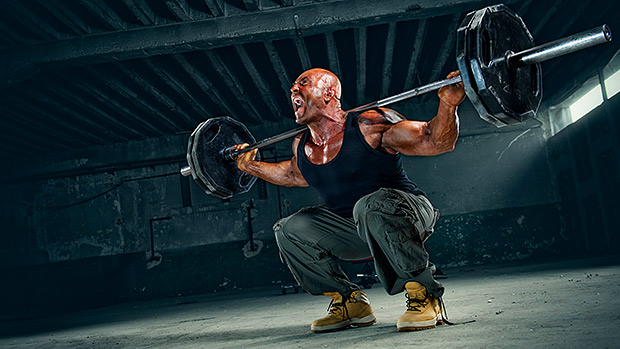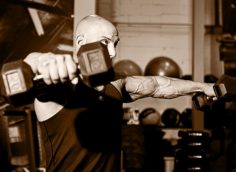The key to building muscle while staying healthy is to hammer the muscles while sparing the joints. Uninjured joints are a major key to consistency. There's no bigger deterrent of long-term progress than being on the sidelines with chronic joint pain.
It comes down to two simple principles:
- Sometimes, lift heavy weights.
- Other times, make light weights feel heavy.
The first part is easy. The second part? That's where most lifters miss the mark. And that's where intra-set tempo changes (ITCs) come in.
This is a way of making light weights feel heavy while building muscle and strengthening your joints. Simply change the tempo of your reps within the set. You can make multiple tempo changes within the same set for a specific number of reps.
This method involves a combination of iso-holds, controlled eccentrics (lowering the weight slowly), and fast concentrics (lifting the weight fast)... done in that order. The number of reps you do can vary as well as the length of the iso-holds and eccentrics.
Here's an example using goblet squats which consists of 15 total reps (or 5/5/5) done with the guidelines above.
- Do 5 reps with a 5-second iso-hold at the bottom of each rep.
- Then do 5 reps where you lower slowly with a 5-second eccentric.
- Finish with 5 reps using a fast concentric/lifting phase.
I generally match the length of the iso-holds and eccentrics to the amount of reps performed. So in this case, 5 reps with 5-second iso-holds and 5 second eccentrics. But you can play around with the numbers.
I've done sets with as many as 10/10/10 (30 total) reps. Yep, that's 10-second iso-holds and 10-second eccentrics before the final 10, which totaled nearly four minutes of work. Yep, I was absolutely buckled for the next few days.
Most lifters know about the three primary tempo modifications:
- Iso-holds/pauses
- Slow eccentrics
- Fast concentrics
These can be mixed and matched based on the adaptations being targeted. Each tempo modification can be massively beneficial for a variety of reasons, which is precisely why combining all three is so valuable.
By emphasizing all three within the same set, you can reap each tempo's respective benefits (at least to some degree) in a more efficient and effective manner than otherwise possible.
And since ITCs start with the hardest tempo modification (iso-holds) and get sequentially easier with the eccentric and concentric-focused reps, there are no wasted reps since they're challenging right off the bat. This gives them an advantage over conventional high-rep sets in which a bunch of "junk volume" is accumulated before the muscles experience any fatigue.
ITCs absolutely fry the muscles while imposing virtually zero stress on the joints. They amplify tension in the working muscle groups and facilitate more microtrauma without the use of heavy loads. In other words, ITCs accomplish the task of making light weights feel heavy, which is never a bad thing for banged-up meatheads trying to build muscle.
To be clear, ITCs won't build absolute strength like pushing big weights. That said, multiple studies have proven that lighter loads can stimulate the same amount of muscle growth as heavy loads when the muscles are pushed to their absolute limits, which is what happens with ITCs.
Certain exercises with a big postural component, like deadlifts, bent-over barbell rows, and overhead presses should be replaced with less demanding alternatives like RDLs, chest-supported rows, and seated dumbbell military presses.
Other than that, just about any exercise can fit the bill as long as you can maintain good form. I prefer movements that involve a relatively large range of motion – like squats, bench press variations, push-ups, and seated cable rows – since that makes the eccentric portion of each set especially challenging.





